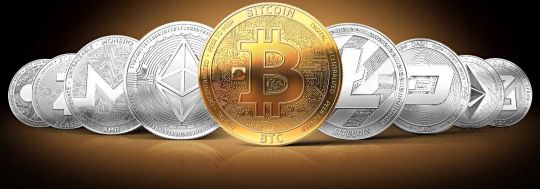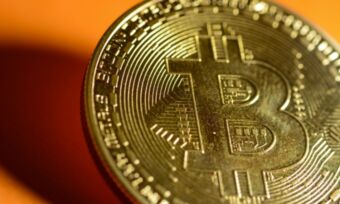Most popular cryptocurrencies right now

The world’s dominant cryptocurrency, Bitcoin (BTC) currently has a market capitalisation higher than the stock valuation of Disney and Mastercard put together. But, the world’s oldest cryptocurrency isn’t the only one giving traditional stocks competition.
As the total crypto market cap continues to top over USD$2 trillion, it’s fair to say that interest in the crypto market is close to an all-time high, especially when the likes of Facebook look to launch its own ‘Novi’ crypto wallet.
CoinSpot’s recent survey discovered that the uptake in crypto investing among Generation Z, Millennial and Generation X investors have doubled with almost 1 in 5 Australians buying, selling, swapping or trading crypto in the past four years. 36% of respondents also believe it’s likely they will own crypto in the next five years.
So, which cryptocurrencies are currently in the top 10 by market cap and what attracts traders, investors and crypto proponents to these currencies over the rest?
Related reading: What is blockchain technology?
What are the best cryptocurrencies to invest in 2022?
With more than 8,000 cryptocurrencies in existence, it can be hard to decipher which ones will generate the biggest returns for investors. For those new to the space, here are some of the top crypto assets by market cap:
- Bitcoin (BTC)
- Ethereum (ETH)
- Tether (USDT)
- Binance Coin (BNB)
- USD Coin (USDC)
- Ripple (XRP)
- Cardano (ADA)
- Solana (SOL)
- Terra (LUNA)
- Binance USD (BUSD)
* market cap correct as of 22 February 2022
1. Bitcoin (BTC) – market cap of USD $701,870,216,306
The world’s first cryptocurrency, Bitcoin uses peer-to-peer technology to operate with no central authority or banks. The cryptocurrency does this through managing transactions and the issuing of bitcoins carried out collectively by the network.
Bitcoin is open-source and is designed to be public, meaning no single person owns or controls Bitcoin and everyone can take part. Stored and exchanged securely on a digital ledger known as a blockchain, Bitcoin has many unique properties including its sparsity. There will only ever be 21 million bitcoin in existence.
Some of the big tech players such as PayPal and Visa have been adopting Bitcoin in their processes in order to seamlessly push the cryptocurrency into the mainstream, and Commbank recently announced its plans to add crypto purchasing to its app.
→ Related: How to buy Bitcoin in Australia
2. Ethereum (ETH) – market cap of USD$307,995,204,552
Known as the second biggest cryptocurrency, Ethereum is a decentralised platform that runs smart contracts, which are essentially applications that run exactly as programs without any possibility of downtime, censorship, fraud or third-party interference.
These smart contract applications run on a custom-built blockchain, which enables developers to create markets, store registries of debts or promises, move funds in accordance with instructions given long in the past, as well as issue new cryptocurrencies, known as Ethereum tokens.
Recently, Ethereum has been gaining investor attention as a result of its announcement that it will be cleaning up its carbon footprint and going green. In what it calls “The Merge”, Ethereum is planning to slash its energy consumption dramatically by 2022. The plan involves an upgrade that will aim to reduce the Ethereum network energy use by over 99%.
3. Tether (USDT) – market cap of USD$79,281,040,921
Tether is a secure and transparent stable coin pegged to the value of the US Dollar. Known as money built for the internet, Tether was specifically designed to form a bridge between fiat currencies and cryptocurrencies and offer stability and minimal transaction charges to users.
Controlled by one of the biggest Bitcoin exchanges by volume in the world Bitfinex, Tether faced some legal challenges in February 2021, when the New York Attorney General’s office said Bitfinex used funds from Tether to cover up to USD$850 million in alleged losses.
Since settling this inquiry, Tether has exploded in growth. Despite now being banned in the state of New York, Tether has almost doubled in market cap and expanded into a range of new blockchains including the likes of Avalanche.
4. Binance Coin (BNB) – market cap of USD$59,944,649,392
Initially created in 2017 as an Ethereum based ERC-20 token, Binance then migrated and became the native currency of Binance’s own blockchain, the Binance Chain.
Binance Coin is a crypto token issued by the Binance exchange. With a finite supply of 200 million tokens, Binance Coin was created as a utility token for use within the Binance platform. Binance Coin has drawn much of its attention in recent months seeing significant price increases that are continuing to grow.
5. USD Coin (USDC) – market cap of USD$$52,517,426,741
USD Coin is an ERC-20 token that is pegged to the US dollar. As the world’s second-largest stablecoin, each USD Coin is backed by one US dollar which is held in a special bank account.
USD Coin aims to provide security by utilising Centre, the consortium that mints the coin and was founded by Circle and crypto exchange Coinbase, and was created with the intention of allowing currency to easily move globally from crypto wallets to other exchanges, businesses and individuals.
Centre announced in August 2021 that it would be changing the makeup of its reserves once again, this time its reserves will consist of cash and US Treasury bonds.
6. XRP (XRP) – market cap of USD$33,678,442,647
XRP is the native cryptocurrency used by the Ripple Payment Network. Originally built for enterprise use, XRP aims to be a fast and cost-efficient cryptocurrency for cross-border payments.
The cryptocurrency has also been in the sights of some of the world’s biggest banks. Over the years, XRP has received recognition from some of the world’s biggest banks and financial institutions such as Bank of America, Santander and American Express, who have been using the cryptocurrency for a range of different applications.
7. Cardano (ADA) – market cap of USD$27,134,723,082
Cardano is an open-source and patent-free blockchain platform built on a proof-of-stake consensus protocol known as “Ouroboros”, which validates transactions without the associated high energy costs.
The crypto asset was developed to address restrictive oversight while maintaining user safety and reliability. Bringing together such disciplines as distributed systems, mechanism design and cryptography.
Recently, Cardano announced it now offers users the ability to run smart contracts, following a major upgrade. Not only does this increase its competitiveness with rival Ethereum, but it has also been a driver for its price growth.
8. Solana (SOL) – market cap of USD$26,658,447,257
Solana is an open-source project that aims to be the world’s first web-scale, high performance, permissionless blockchain.
Seeking to use a revolutionary innovation called ‘Proof of History’ to remove performance bottlenecks, allowing transaction throughput to scale proportionally with network bandwidth, Solana can be earned by staking coins for validators who run the network or by providing computing resources to validate transactions.
Solana is on a tear at the moment, hitting all-time high after high with some deeming this rise due to its major improvements and increased interest in the NFT space.
9. Terra (LUNA) – market cap of USD$19,653,118,767
Terra launched in 2019 as a blockchain protocol that uses stablecoins to power the price and with a strong focus on usability. Currently Terra offers stable coins that are linked to the US dollar, South Korean won, Mongolian tugrik, along with the International Monetary Fund’s Special Drawing Rights basket of currencies. Additional currency options are intended to be rolled out in the future.
10. Binance USD (BUSD) – market cap of USD$18,102,410,268
Binance USD is a crypto token issued by the Binance exchange. It is a USD backed stable coin issued in partnership with Paxos described as digitised US Dollars. It is supported on both ERC-20 and BEP-2 which allows the user to transfer their US dollars on the blockchain.
This article was reviewed by our Content Producer Isabella Shoard and Content Producer Marissa Hayden before it was updated, as part of our fact-checking process.






